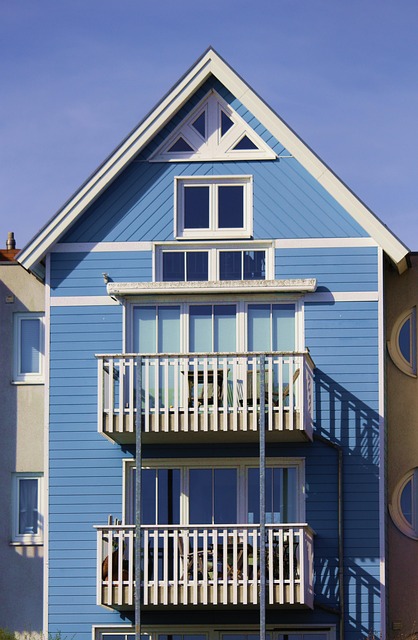Bungalows: Design, Coastal Settings, and Vacation Use
Bungalows are a widely recognized house form offering single-story living, often with a low-pitched roof and a covered porch. They can range from modest cottages to more spacious, contemporary homes. This article explains what defines a bungalow, how they fit into beach and coastal landscapes, what to consider when using one for a vacation stay, and practical maintenance and design details for ocean-facing locations.

What is a bungalow?
A bungalow is typically a single-level home that emphasizes simplicity, efficient use of space, and a close relationship between indoor and outdoor living. Classic bungalows often include a front porch, open living areas, and built-in cabinetry that reflects early 20th-century Craftsman influences. Modern interpretations preserve single-floor accessibility while adapting layouts for contemporary needs such as flexible living spaces, small-bedroom designs, and integrated storage.
Many bungalow designs prioritize natural light and ventilation. Because they are step-free or have a single short stairway, bungalows are also chosen for accessibility and aging-in-place considerations. The form works well on smaller lots and in settings where a lower building profile is desirable, such as historic neighborhoods or coastal properties where views and outdoor living are primary.
How do bungalows work on a beach?
Beach bungalows often adopt features that suit sandy, windy environments and casual outdoor living. Wide porches or decks provide shaded outdoor space, while large windows and sliding doors help connect interiors to the shoreline. Raised foundations or pilings are common where regulatory guidance or flood risk dictate elevation above expected high-water levels.
Materials and detailing are typically selected with salt spray and moisture in mind: corrosion-resistant fasteners, rot-resistant siding, and durable decking surfaces. Landscaping near beach bungalows should favor native, dune-stabilizing plants that tolerate salt and shifting sand. Beach bungalows are frequently designed for short-term stays or seasonal use, so durable finishes and easily maintained surfaces are practical choices.
Can a bungalow be a vacation rental?
Bungalows are well-suited to vacation use because their compact, open layouts and outdoor living areas encourage short-term comfort and social gathering. Many vacation bungalows include flexible sleeping arrangements, an efficient kitchen, and an easy indoor-outdoor flow that guests expect on trips to coastal or rural destinations. They can be outfitted with durable but attractive furnishings to withstand frequent turnovers.
When converting or designing a bungalow for vacation rental use, consider local regulations, required permits, and safety standards such as smoke alarms, carbon monoxide detectors, and clear evacuation routes. Local services—property managers, maintenance contractors, and cleaning teams—can help ensure consistent upkeep and compliance with hospitality regulations in your area.
What are coastal design considerations for bungalows?
Designing a bungalow for coastal exposure involves balancing aesthetics, durability, and local regulations. Orientation and window placement should maximize breezes while limiting direct solar gain during hot months. Overhangs, porches, and shutters can protect openings from intense sun and storms. Specifying corrosion-resistant hardware, marine-grade stainless steel, fiber cement, or properly treated timber reduces long-term maintenance issues.
Site planning should consider storm surge, erosion patterns, and local building codes. Where appropriate, elevate living spaces or use sacrificial landscape buffers. Integrating passive cooling strategies—cross-ventilation, shaded outdoor rooms, thermal mass where climate-appropriate—can reduce reliance on mechanical cooling and improve guest comfort in a vacation context.
How to protect a bungalow from ocean exposure?
Maintenance and preventative measures are key for bungalows near the ocean. Regular inspections of roofing, flashings, deck fasteners, and paint or cladding help catch corrosion and rot early. Use finishes and coatings designed for marine environments and choose fasteners and connectors rated for coastal installations. Consider landscaping that creates a windbreak or stabilizes soil while avoiding plants that trap moisture against structural elements.
Operational practices also matter: ensure gutters and downspouts are clear, keep vents and HVAC intakes positioned to minimize salt intrusion, and plan for periodic replacement of vulnerable materials. Work with local services—licensed contractors, coastal engineers, and insurers familiar with seaside properties—to align upgrades and maintenance with local conditions and regulatory requirements.
Conclusion
Bungalows offer a versatile, accessible housing form that adapts well to beach and coastal settings as both permanent homes and vacation accommodation. Successful coastal bungalow design balances a strong indoor-outdoor connection with materials and site strategies that respond to salt, wind, moisture, and regulatory constraints. Regular maintenance and consultation with local services help protect investment and preserve the casual, compact character that makes bungalows appealing in ocean-adjacent landscapes.






